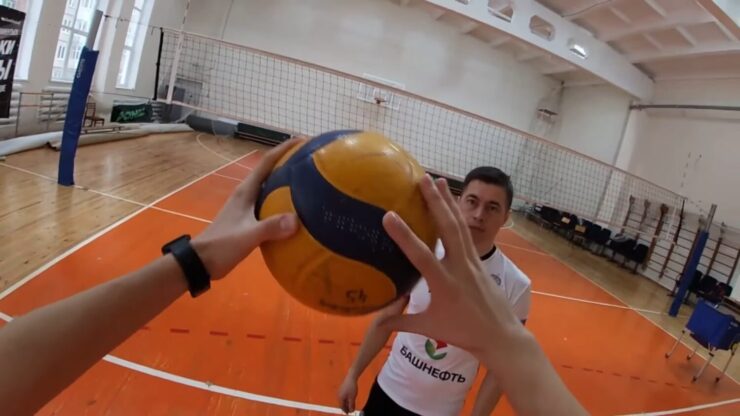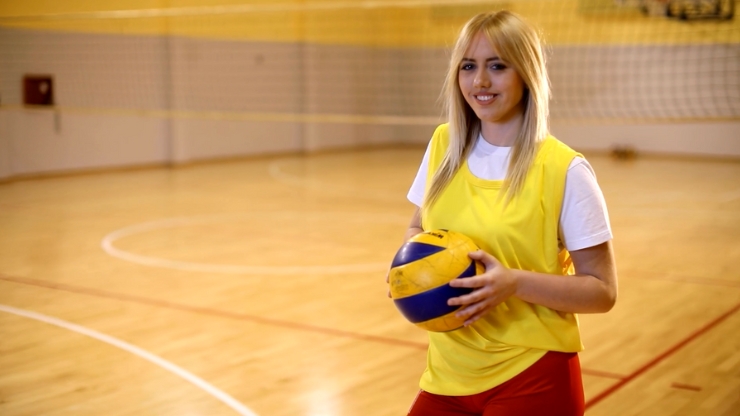Volleyball, a dynamic and fast-paced sport, has captured the hearts of millions around the world. With its unique blend of athleticism, teamwork, and strategy, volleyball offers a thrilling experience for players and spectators alike. However, amidst the excitement and intricacies of the game, a persistent question arises: Can you kick the ball in volleyball?
This inquiry has sparked curiosity and debate among volleyball enthusiasts, leading to a common misconception that kicking the ball is a legitimate technique in the sport. In this comprehensive guide, we will delve into the truth behind this belief, uncovering the facts and rules surrounding kicking in volleyball. So, let’s lace up our imaginary volleyball shoes and explore whether kicking is a myth or a reality in this captivating sport.
The Basics of Volleyball

Before we dive into the specifics of kicking in volleyball, let’s establish a foundational understanding of the game. This is a team sport played on a court divided by a net. The objective is to rally the ball over the net, aiming to land it within the opponent’s side of the court while preventing the opposing team from doing the same.
Players primarily use their hands and arms to pass, set, and attack the ball, employing techniques such as serving, setting, spiking, and blocking. These fundamental actions, executed with precision and skill, form the backbone of the sport.
The Legal Actions in Volleyball

To navigate the question of kicking in volleyball, it is crucial to familiarize ourselves with the legal actions allowed in the game. The official rules of this sport, as outlined by international governing bodies such as the Fédération Internationale de Volleyball (FIVB), explicitly define the permissible methods of interacting with the ball.
While players are allowed to use various body parts to make contact, such as their hands, arms, head, and torso, there is a distinct absence of any mention regarding kicking. This absence of inclusion clearly indicates that kicking is not recognized as a legitimate action in this sport.
Kicking in Volleyball: Myth or Reality?
The belief that kicking the ball is allowed in volleyball has been perpetuated over time, leading to confusion among players and spectators. This myth likely stems from a conflation with sports like soccer, where kicking is a fundamental part of the game.
However, it is important to recognize that this is a distinct sport with its own set of rules and techniques. While the notion of kicking may appear plausible due to the spherical nature of the ball, it is essential to dispel this myth and understand the reality of the sport.
The Official Rules

To further solidify the understanding that kicking is not permissible in volleyball, let us examine the official rules established by governing bodies such as the FIVB. According to Rule 9.2.3 of the FIVB Official Volleyball Rules, “It is a fault if a player intentionally kicks the ball.”
This rule explicitly clarifies that intentional kicking is not only against the rules but also constitutes a fault.
The use of the term “fault” emphasizes the severity of the violation and highlights that kicking is unequivocally prohibited.
The Rationale Behind the Rule
To comprehend why kicking is prohibited in this sport, we must explore the underlying rationale behind this rule. The prohibition of kicking serves several important purposes in the sport. Firstly, it ensures fairness by maintaining a level playing field where all players adhere to the same set of rules and restrictions.
Secondly, it promotes safety by reducing the risk of collisions and injuries that may occur if players were allowed to kick the ball.
Lastly, it upholds the integrity and consistency of the game, preserving the essence of volleyball as a sport primarily focused on hand-based techniques and skills.
Potential Consequences of Kicking the Ball
In any sport, disregarding the established rules can lead to consequences, and volleyball is no exception. Attempting to kick the ball during a volleyball game carries a range of potential penalties and repercussions.
Violations, faults, or even disqualification can be imposed on players who intentionally kick the ball. These consequences not only impact the individual player but also the overall dynamics and fairness of the game.
Therefore, it is essential for players to adhere to the rules and refrain from engaging in kicking actions.
The History of Volleyball Rules
To gain a deeper appreciation for the prohibition of kicking in volleyball, it is valuable to explore the historical context and development of the sport’s rules. The sport itself originated in the late 19th century and has since undergone significant rule refinements.
The early pioneers of volleyball recognized the importance of distinguishing the sport from others, which likely led to the establishment of specific rules, including the prohibition of kicking.
This historical foundation underscores the enduring nature of the rule and its integral role in defining the sport.
Kicking in Volleyball Training and Drills
Given the curiosity surrounding kicking in volleyball, it is understandable that players may seek alternative training techniques or drills that involve footwork. While kicking is not a sanctioned technique, players can still engage in exercises that focus on footwork, agility, and coordination.
These drills can enhance overall athleticism and contribute to volleyball-specific skills such as quick movements, balance, and court coverage.
By emphasizing legitimate techniques and footwork-based exercises, players can develop well-rounded skills while remaining within the boundaries of the rules.
In the realm of volleyball, there is an essential technique known for its precision and control, allowing players to accurately receive the ball during gameplay.
Myth-Busting: Instances of Ball Contact with Feet
In the fast-paced nature of volleyball, instances may arise where the ball unintentionally contacts a player’s foot. It is crucial to distinguish between accidental foot contact and deliberate kicking.
Accidental foot contact, often referred to as a “foot fault,” occurs when the ball touches a player’s foot without any intent or deliberate action. In such cases, as long as the player does not intentionally kick the ball, it is not considered a violation. The key distinction lies in the intent behind the action.
Expanding Volleyball Skills Beyond Kicking
While the allure of kicking the ball in volleyball may be intriguing, it is important to shift the focus toward mastering hand-based techniques and other legitimate skills. Volleyball offers a vast array of techniques and strategies that can enhance a player’s performance.
By investing time and effort into refining hand-based skills such as serving, setting, spiking, and blocking, players can elevate their game and contribute to the team’s success.
Moreover, prioritizing teamwork, communication, and understanding the nuances of the sport can have a profound impact on overall performance and enjoyment.
If you want to know what is an ace in volleyball, click here.
Conclusion

In conclusion, the notion of kicking the ball in volleyball is unequivocally a myth. While the spherical nature of the ball may create an illusion of feasibility, the official rules and historical context firmly establish that kicking is not a legitimate action within the sport.
Understanding and respecting the rules of volleyball, including the prohibition of kicking, are integral to fostering fairness, safety, and the true essence of the game.
As players and enthusiasts, let us embrace the hand-based techniques, teamwork, and strategies that define volleyball, ensuring an authentic and enriching experience for all involved.

